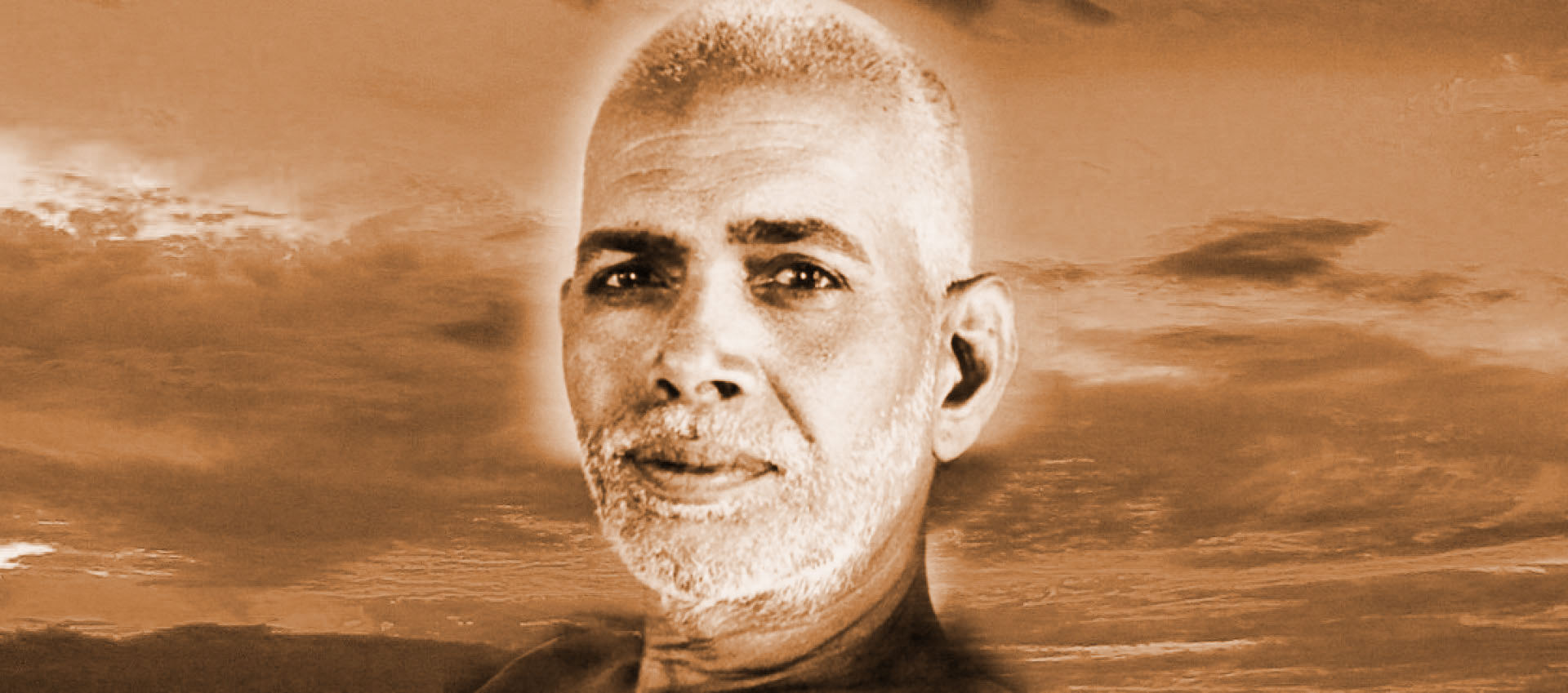
What is Self-Enquiry? How to do it? (3)
Excerpts from “Talks with Ramana Maharshi”
~~~~~~~~
Talk 532.
D.: Is there no way of escape from the miseries of the world?
M.: There is only one way and that consists in not losing sight of one’s Self under any circumstances.
To enquire “Who am I?” is the only remedy for all the ills of the world. It is also perfect bliss.
Talk 197.
M.: To say ‘I am not this’ or ‘I am that’ there must be the ‘I’. This ‘I’ is only the ego or the ‘I-thought’. After the rising up of this ‘I-thought’, all other thoughts arise. The ‘I-thought’ is therefore the root-thought. If the root is pulled out all others are at the same time uprooted. Therefore seek the root ‘I’, question yourself “Who am I?”; find out its source. Then all these will vanish and the pure Self will remain ever.
D.: How to do it?
M.: The ‘I’ is always there – in deep sleep, in dream and in wakefulness. The one in sleep is the same as that who now speaks. There is always the feeling of ‘I’. Otherwise do you deny your existence? You do not. You say ‘I am’. Find out who is.
~~~~~~~~
Talk 202.
Remain without thinking. So long as there is thought there will be fear.
…
Forgetfulness and thought are for ‘I-thought’ only. Hold it; it will disappear as a phantom. What remains over is the real ‘I’. That is the Self. Thinking ‘I am Brahman’ (Real Self), is an aid to concentration. It keeps off other thoughts. That one thought alone persists. See whose is that thought. It will be found to be from ‘I’. Wherefrom is the ‘I’ thought? Probe into it. The ‘I- thought’ will vanish. The Supreme Self will shine forth of itself. No further effort is needed.
~~~~~~~~
Talk 195.
M.: Seek the mind. On being sought, it will disappear.
D.: I do not understand.
M.: The mind is only a bundle of thoughts. The thoughts arise because there is the thinker. The thinker is the ego. The ego, if sought, will vanish automatically. The ego and the mind are the same. The ego is the root-thought from which all other thoughts arise.
D.: How to seek the mind?
M.: Dive within. You are now aware that the mind rises up from within. So sink within and seek.
D.: I do not yet understand how it is to be done.
M.: You are practising breath-control. Mechanical breath-control will not lead one to the goal. It is only an aid. While doing it mechanically take care to be alert in mind and remember the ‘I’ thought and seek its source. Then you will find that where breath sinks, there ‘I-thought’ arises. They sink and rise together. The ‘I-thought’ also will sink along with breath. Simultaneously, another luminous and infinite ‘I-I’ will become manifest, which will be continuous and unbroken. That is the goal. It goes by different names – God, Self, Kundalini Sakti, Consciousness, Yoga, Bhakti, Jnana, etc.
~~~~~~~~
Talk 196.
M.: The various methods are differently adopted according to the stage of the aspirant and his antecedent predisposition or tendencies. Really there are only two methods: enquiry and devotion. One leads to the other.
D.: Seeking the ‘I’ there is nothing to be seen.
M.: Because you are accustomed to identify yourself with the body and sight with the eyes, therefore, you say you do not see anything. What is there to be seen? Who is to see? How to see? There is only one consciousness which, manifesting as ‘I-thought’, identifies itself with the body, projects itself through the eyes and sees the objects around. The individual is limited in the waking state and expects to see something different. The evidence of his senses will be the seal of authority. But he will not admit that the seer, the seen and the sight are all manifestations of the same consciousness – namely, ‘I-I’. Contemplation helps one to overcome the illusion that the Self must be visual. In truth, there is nothing visual. How do you feel the ‘I’ now? Do you hold a mirror before you to know your own being? The awareness is the ‘I’. Realise it and that is the truth.
D.: On enquiry into the origin of thoughts there is a perception of ‘I’. But it does not satisfy me.
M.: Quite right. The perception of ‘I’ is associated with a form, maybe the body. There should be nothing associated with the pure Self. The Self is the unassociated, pure Reality, in whose light, the body, the ego, etc. shine. On stilling all thoughts the pure consciousness remains over.
Just on waking from sleep and before becoming aware of the world there is that pure ‘I-I’. Hold to it without sleeping or without allowing thoughts to possess you. If that is held firm it does not matter even though the world is seen. The seer remains unaffected by the phenomena.
~~~~~~~~
Talk 290.
D.: The mind is not steady in meditation.
M.: Whenever it wanders, turn it inward again and again.
D.: When duhka (misery) overpowers me, enquiry is impossible.
M.: Because the mind is too weak. Make it strong.
D.: By what means?
M.: Sat-sanga (association with the wise), Isvara Aradhana (worship of God), Pranayama (breath control).
D.: What happens?
M.: Misery is removed; our aim is removal of misery. You do not acquire happiness. Your very nature is happiness. Bliss is not newly earned. All that is done is to remove unhappiness. These methods do it.
…
D.: Abhyasa (practice) should give me that power.
M.: Practice is power.
D.: What is such practice?
M.: Enquiring into the Self. That is all. Atmanyeva vasam nayet …..Fix the mind on the SELF.

